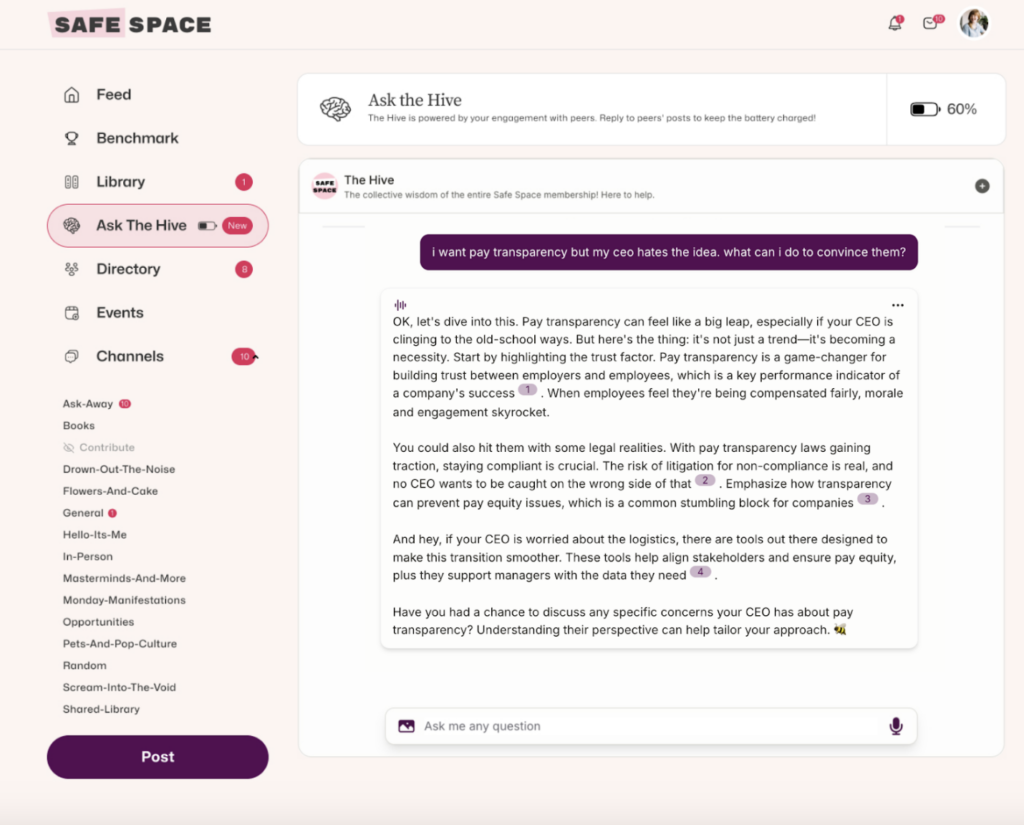
Woosh. Email in my inbox.
Ping. Message in my Slack.
Ding. A comment tagging me in the project management system.
Ring. A call from someone about a work task. ☎️
All maybe within the same 5 minutes.
My experience isn’t unique.
Your employees are inundated ALL day long with various forms of communication and it can actually make communicating effectively a major struggle for organizations.
Case in point: ever launch a process and send a super robust email with every deadline, task and outcome listed. A communication you poured over, edited and thoughtfully considered every thing that needed to be known, only to have your employees ask you 15 times what they needed to do?
Be still my angry racing heart.
(Not so) Fun fact: Workers are spending 20 hours a weekusing digital communication tools and nearly 50% of them report ineffective communication impacts their productivity. YIKES.
And HR is usually involved with all internal communications because it all comes back to how it impacts the employees.
Ineffective communication can impact your organization’s productivity, morale, stress and employee satisfaction.
Now, there are a few factors that go into communicating effectively, for example:
- Your culture
- Your leaders
- Organizational alignment
- Feedback abilities
- HR team capacity
But since the focus this quarter has been all about your HR tech stack, today I’m going to focus on how a comms tool can actually help you solve some problems we’re facing.
I’d probably need a whole quarter to focus on communication because I have this theory that almost every problem at work comes back to communication.
I’ve even asked some comms folks about their thoughts and you’ll see them throughout the newsletter today.
JOIN 150K+ HR LEADERS
Get insights, learnings, and advice on how to build companies and cultures that people actually love.
No spam. Unsubscribe any time.
Like this gem from my friend Dinah:
Just because we’re in the age of AI doesn’t mean your company’s comms should be robotic. Ever. The way you share information with your people – in emails, in slack messages, on all hands meetings – sets the foundation and expectations for what your true DNA as a company is. Your comms ARE your culture. And no matter what your business goals, I believe there are three nonnegotiables in company comms: 1) be straightforward, 2) be as succinct as possible, and 3) always be kind. – Dinah Alobeid, Senior Director Content & Communications at Greenhouse.
How a comms tool can help:

Mega bonus points if you know what movie this is from!
I’ve spent this quarter saying tech can’t solve all your problems and to keep that in mind as we discuss each type of tool, today’s no different!
BUT if there is one type of tool I’m particularly interested in, it’s a tool to help internal communication.
Why? Because I believe communication impacts everything!!
An example: a manager comes to HR and shares that an employee isn’t performing well.
My first question is always: Have you told them what’s expected of them?
TBH: Usually the answer is no because people don’t know how to communicate effectively around things like expectations and job duties, etc.
A great internal comms tool can help:
- Reduce wasted time
- Improve efficiency with clarity & transparency
- Gives employees the information they need
- Facilitate collaboration
- Give recognition and appreciation
- Improve remote working experience
- Promote inclusion
- Boost engagement (THIS IS REALLY IMPORTANT!)
And I’m not just talking about how HR communicates!
A comms tool can even help with:
- Manager to employee comms
- Employee to upper management comms
- Peer to peer comms
- Crisis communication
All the comms!
✍ But HR shouldn’t spend their days drafting comms like we’re screenwriters writing the next great movie. Barbie’s already been made, we can rest!
There are tools that can help draft, automate and even help you plan out WHAT moments need your attention.
One of my favorite internal comms tools: Change Engine.
Their library is FULL with 500+ HR comms templates thats free for you to access.
The bottom line: You should never miss a moment that matters to your employees.
And a comms tool will give you something back that is priceless:
TIME. ⏰
Check out what my friend Carolyn has to say about the importance of internal comms:
It’s high time we recognize the pivotal role that communication tools play in business. Internal communications should no longer be relegated to an afterthought. Communication is not just a functional necessity. It’s a strategic advantage that directly impacts an organization’s bottom line (revenue), our work output (productivity), and how long people stick (retention).
And if you get that budget, you better be sure the comms tools you’re investing in haven’t just embraced AI but they have integrated it into their core strategies. The best comms tools have been steeped (can you tell I’m an avid earl grey drinker?!) in AI from their start. It’s not sufficient to merely declare an investment in AI. The crucial next step entails meticulously defining and implementing AI technologies to enhance organizational efficiency and elevate the overall employee experience.
This starts by thinking about what’s in your tech stack to support both your EX-function and more importantly, your employees directly. – Carolyn Clark, VP Employee Experience Strategy, Simpplr
What’s next:

Thank you, next. I’m so grateful for my ex.
You’ve heard me rave about the tools you need in your tech stack all quarter but how do you actually secure budget for these tools??
Well… tune it next week!
I’m diving into how to secure that budget so that you can make all your dreams come true in 2024.


